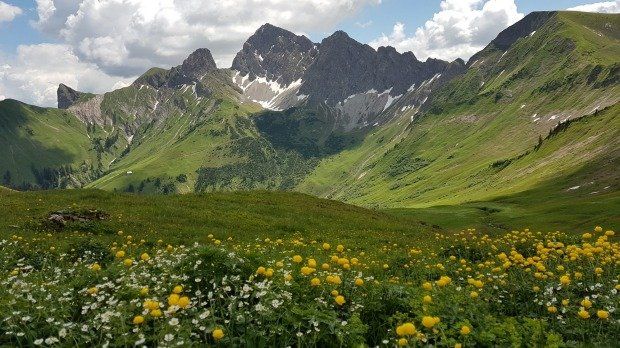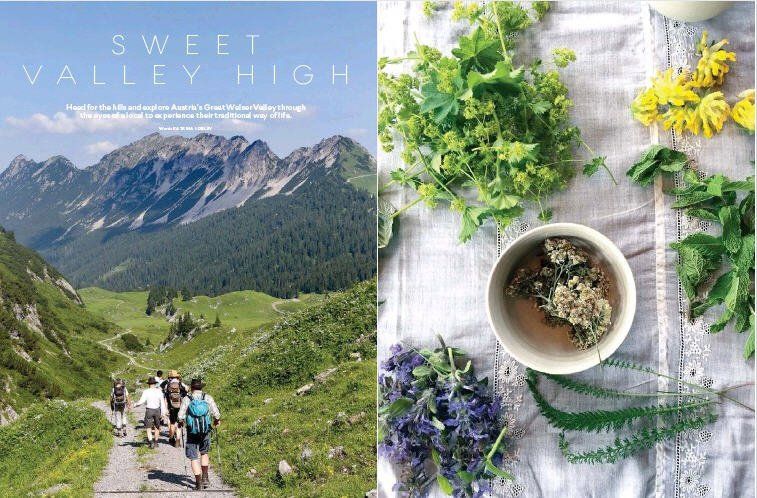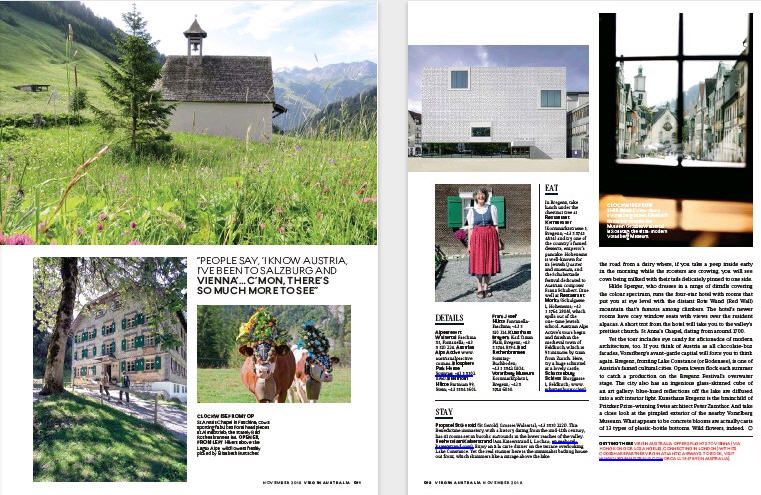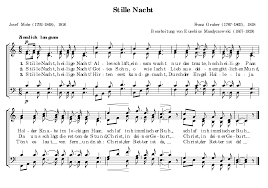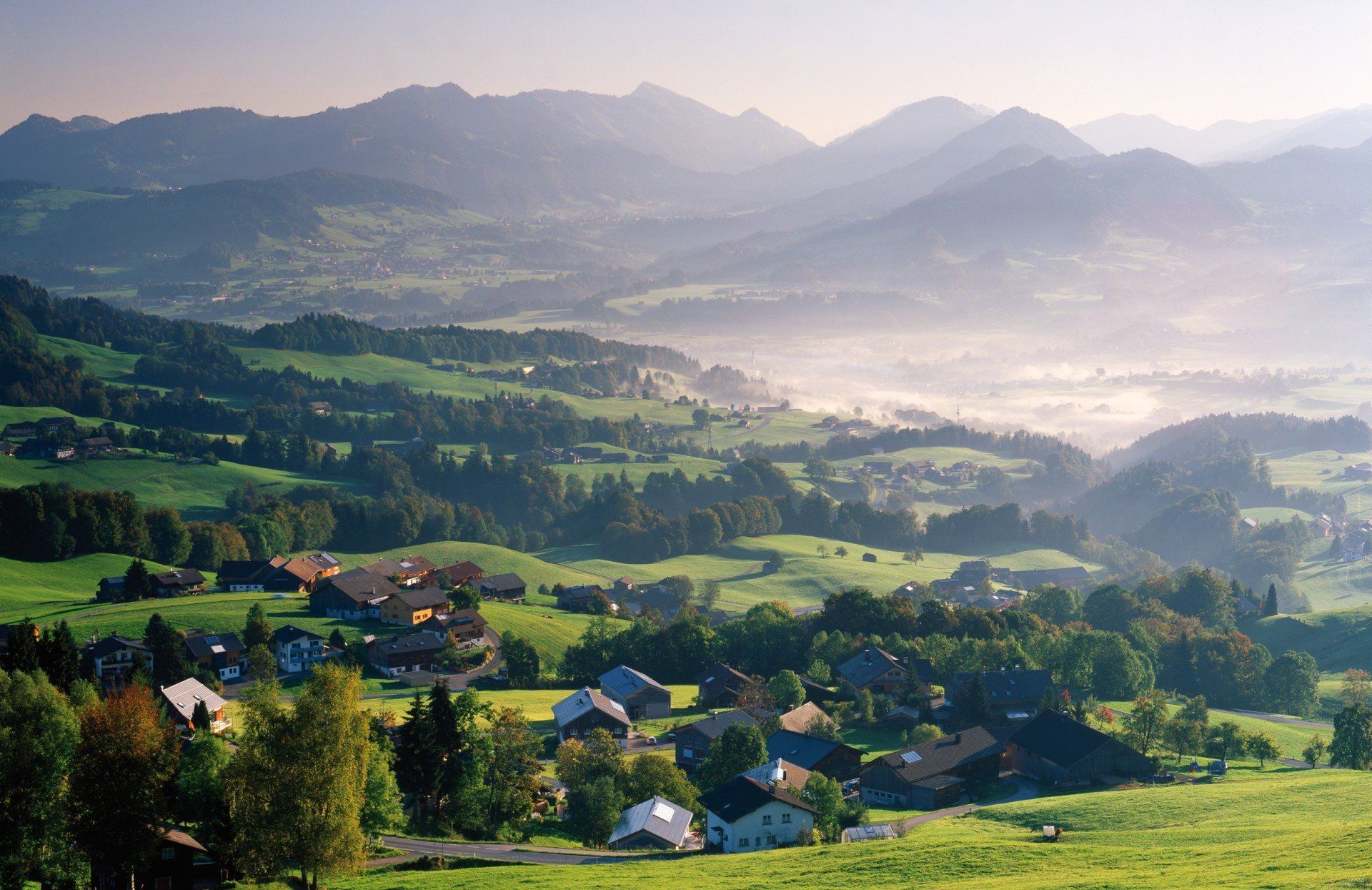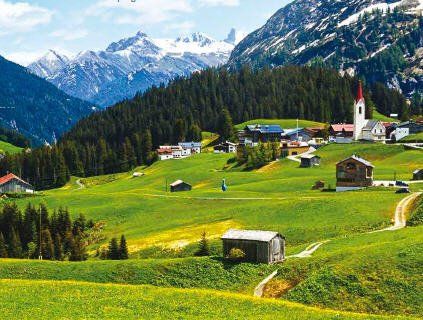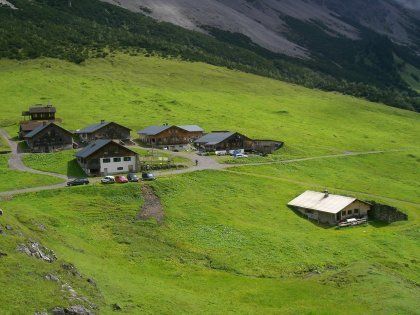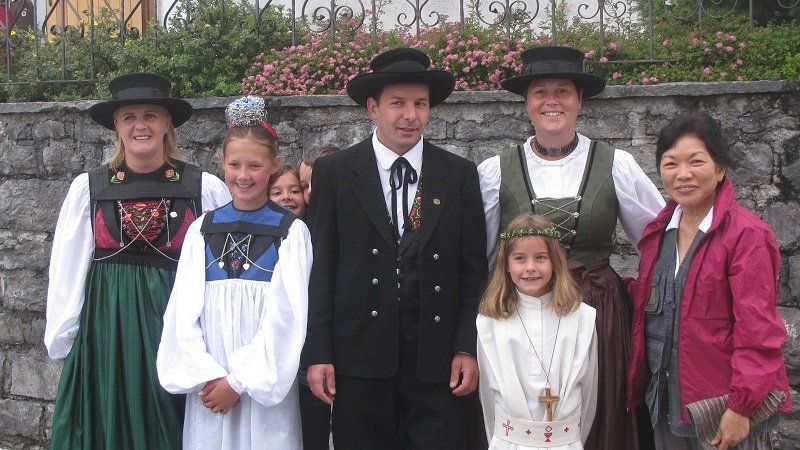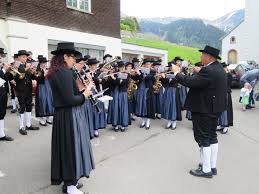Sweet Valley High(Biosphere Reserve Grosses Walsertal)
An article, published in Virgin Australia's travel magazine 'Voyeur', written by Katrina Lobley, travel writer from Sydney
Elisabeth Burtscher crooks an arm around her nine-year-old grandson, Levin. They’re engrossed in identifying the wildflowers and herbs sprouting from the alpine meadows of Austria’s Grosses Walsertal (the Great Walser Valley). Burtscher knows every fold and field of this ravine-like chink in the Alps that’s been home to Walser people since they arrived here from neighbouring Switzerland in the 13th century.
The resourceful Walser have somehow scratched a living as dairy farmers from these ridiculously steep slopes. It hasn’t brought riches – others have poked fun at their austere ways over the years - but now their intimate knowledge of this landscape is on show thanks to initiatives such as the Bergtee (mountain tea) project.
Burtscher, a Walser woman, is a driving force behind the project in which local women forage for wild plants, drying their pickings and transforming them into packaged tea. Those who head into the valley with Austrian Alps Active , a walking tour company formed by Burtscher’s son Patrick and his Australian wife Maree, will meet this wise woman and gather fresh wildflowers to make their own pot of mountain tea. “My connection is very strong … to the world of plants,” says Burtscher, explaining that both her mother and grandmother passed down to her their knowledge of the valley’s flora and its medicinal uses.
“We’re collecting old wisdom,” she says, promptly giving an example. “We never go out and pick before the bees have what they need. We don’t need to tell anyone in the valley – everyone knows, ‘Don’t pick the flowers unless the bees have enough’.”
She arranges the pickings - dandelions, daisies, blackcurrant leaves, red clover, lamb’s tongue, stinging nettles and more - on a delicate heirloom tablecloth before throwing a selection of seven flowers, herbs and leaves into a pot and steeping them in hot water. The brew is as green as envy but a revelation that you can make tea from just about anything nature provides.
Experiences such as these are part of the reason Patrick Burtscher wants his home valley to become more widely known. “People say, ‘I know Austria - I’ve been to Salzburg and Vienna’,” he says. “I always felt, ‘C’mon, there’s so much more to see.”
He’s right. His company’s 10-day classic walking tour involves a thorough exploration of the valley, plus a few side-trips beyond the Grosses Walstertal. Guests are based in Faschina, a tiny ski village perched above Fontanella – Patrick’s home village before he moved to Melbourne after meeting Maree (they now swing between these two home bases). From Faschina, it’s easy to make like the dairy cows that chime out a symphony with their neck bells as they traverse the slopes. The village is the gateway to high-altitude backcountry bejewelled with alpenroses – deep-pink rhododendrons. It’s also where you find cosy mountain restaurants such as Franz Josef Hütte. “We’re seeing the Emperor today,” jokes Patrick, referencing history when speaking about the hütte’s eponymous owner, Franz Josef Konzett, who’s all twinkling blue eyes as he pours out shots of pear schnapps.
Martha’s Hut (officially Breithorn Hütte), on the other side of the valley, is another charming lunch spot – it leads to a sonic trail complete with an echo wall. Hikers can yell through a megaphone at a nearby mountain and hear their voice bounce straight back at them. At the other end of the lunching spectrum is the grander Rothenbrunnen Inn, which stacks its napkin-wrapped cutlery in the neat manner of an Austrian woodpile. The inn, fronted by two soaring maple trees and a tiny chapel, sits near an iron-rich spring that’s stained the stones rust-red. It serves hearty “farmer’s toast” topped with speck and grilled mountain cheese.
Cheese is something of an obsession in the valley, thanks to those glorious flower-rich alpine meadows (farmers in Vorarlberg can compete in meadow championships that acknowledge the rarity and variety of plant species in their meadows). Some dairy farmers shift their families and herds to an alpine base for the summer. It’s a big deal when the cows return to lower altitudes in autumn – they’re adorned with showgirl-like floral headpieces for an annual ceremony known as Alpabtrieb.
To buy a wedge of mountain cheese, so revered it’s known as the valley’s “white gold”, drop in to Sonntag’s Biosphere Park House that houses an exhibition alpine dairy, museum and café. The valley became a UNESCO Biosphere Reserve in 2000 in recognition of the role farmers play in maintaining their dazzling mountain landscape.
You can also enjoy rich, creamy milk – the sort that’s never sold in supermarkets - with breakfast at the Alpenresort Walsertal in Faschina, the base for Austrian Alps Active’s guests. The hotel is across the road from a dairy where, if you peep inside early in the morning while the roosters are still crowing, you’ll see cows being milked with their tails delicately pinned to one side.
Hilde Sperger, whose range of dirndls covers the entire colour spectrum, runs the four-star hotel with rooms that put you at eye level with the distant Rote Wand (Red Wall) peak that’s famous among climbers. Newer rooms feature a cosy window seat with views over the resident alpacas. It’s a short trot from the hotel to what’s easily the valley’s prettiest church: St Anna’s Chapel dates from around 1700.
Yet the tour includes eye candy for aficionados of modern architecture, too. If you think Austria is all chocolate-box facades, Vorarlberg’s avant-garde capital will force you to think again. Bregenz, fronting Lake Constance (or Bodensee), is one of Austria’s famed cultural cities. Opera lovers flock each summer to catch a production on the Bregenz Festival’s overwater stage. The city also houses an ingenious glass-skinned cube of an art gallery: blue-hued reflections off the lake are diffused into a soft interior light. Kunsthaus Bregenz is the brainchild of the uncompromisingly minimalist Pritzker Prize-winning Swiss architect, Peter Zumthor. But if it’s humour you’re after in a building, take a close look at the pimpled exterior of the nearby Vorarlberg Museum. What appears to be concrete blooms are actually casts of 13 types of plastic-bottle bottoms. Wild flowers, indeed.
